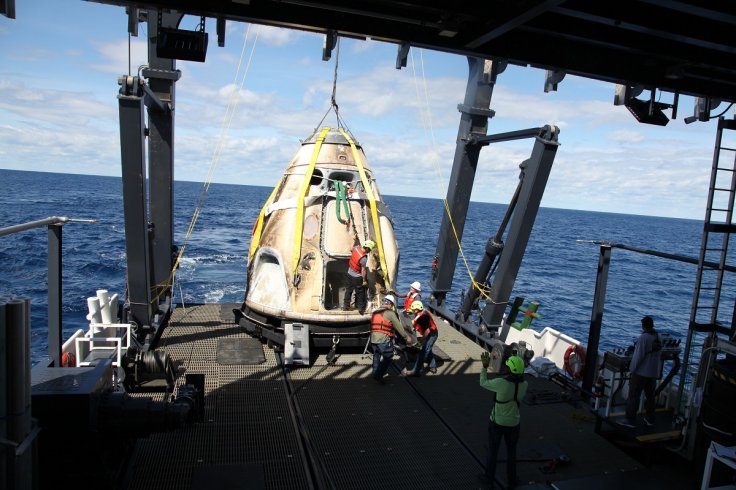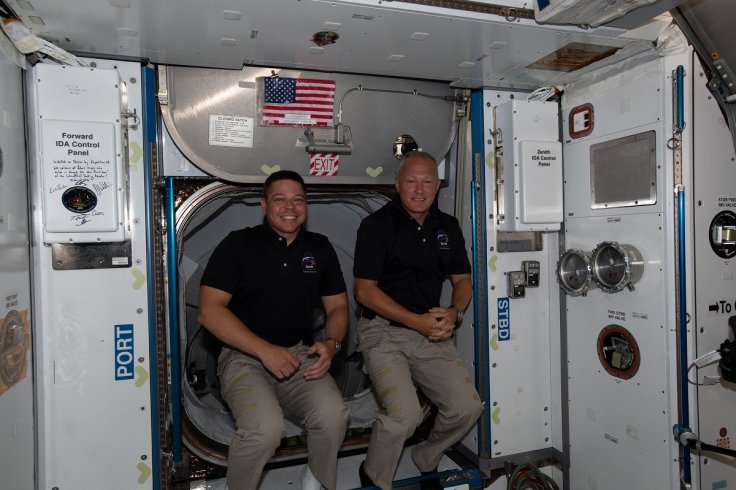The successful launch and splashdown of SpaceX's first-ever manned spaceflight created history in the commercialization of space. However, the milestone was minutes away from ending in a disaster after Elon Musk's company found unexpected damages to the Crew Dragon capsule's heat shield.
While astronauts Bob Behnken and Doug Hurley from NASA safely returned to Earth on August 2 after spending two months at the International Space Station (ISS), the heat shield will be reinforced for its next mission. Hans Koenigsmann, SpaceX's Vice President of Mission Assurance at Space Exploration Technologies said that they noticed "a little more erosion than we wanted to see" in a few areas of the capsule's heat shield.

Issues Surrounding Re-entry
The re-entry has always been one of the most difficult aspects of a manned mission. As the spacecraft renters Earth's atmosphere from space, it has to go through intense heat that can reach up to 3,500 degrees Fahrenheit or nearly 2,000 degrees Celsius, creating superheated plasma.
The heatshield saves the capsule from the intense temperature. However, if the shield is somehow compromised or encounters problems, it could be catastrophic for the crew. NASA lost all seven crew members of the Columbia Space Shuttle in 2003 during the reentry after a portion of the heat-resistant tiles of the heat shield was damaged.
Before the Crew Dragon capsule returned from the ISS, NASA did survey the heat shield for damages when it was still docked. While the crew capsule is still attached to the ISS, small space debris could cause little to serious damage to the heat shield. However, inspecting it with a robotic arm on the ISS could not find any issue.

Only after it splashed down in the Gulf of Mexico that engineers evaluated the capsule and found the erosion. While it was just a demo mission, such erosion if overlooked could lead to a catastrophe. Koenigsmann although said that there was "nothing to be concerned with and astronauts were safe as the vehicle was working perfectly".
It was not clear why the test flights didn't show up the particular problem. Koenigsmann said it could due to the light weight of the capsule and different trajectory. He added that he was happy to find the problem during the demo manned mission.
Reinforced Heat Shield
However, as SpaceX is set to carry four astronauts to a routine mission in October, SpaceX and NASA sought to reinforce the vulnerable component to better materials. "We've gone in and changed out a lot of the materials to better materials. We've made the area in between these tiles better," Steve Stich, Program manager for NASA's Commercial Crew Program, said as reported by Business Insider.

NASA also tested the components at a wind tunnel to mimic the reentry at the Ames Research Center in California. After testing five samples, Koenigsmann said he was confident that the particular problem was fixed and it wouldn't be an issue anymore. "Everything has been tested and is ready to go for the next mission," he added.
The first routine NASA crew mission is scheduled for October 31. A SpaceX Falcon9 rocket will carry the Crew Dragon capsule with NASA's American astronauts Mike Hopkins, Victor Glover, and Shannon Walker, and Japanese astronaut Soichi Noguchi to the ISS.









